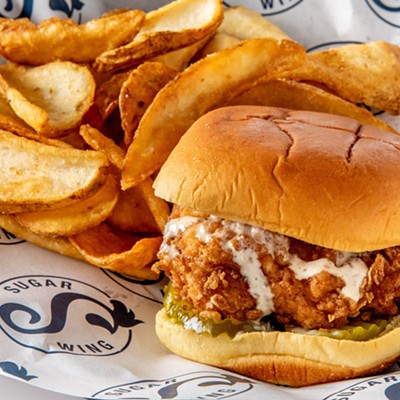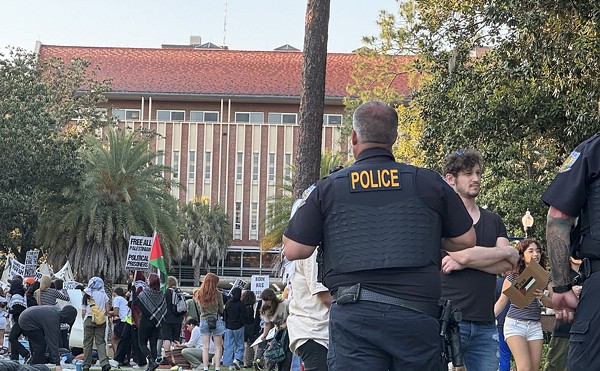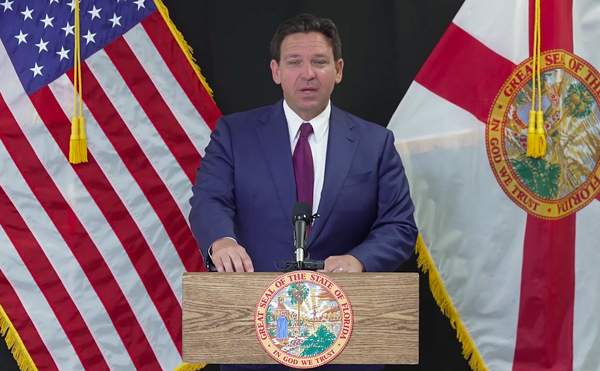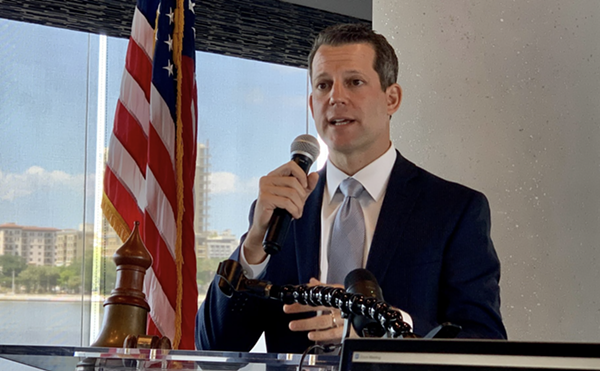Ever seen a ponderosa lemon?
They’re almost the size of your head, or at least as big as a large grapefruit.
There’s a handful of ponderosa lemon trees growing in what remains of Ben Tillett’s citrus grove just off the Sunshine Skyway in Terra Ceia. He recommends using them in lemon pies.
Tillett has owned the land since 1979, along with the adjacent Florida Citrus Place, a roadside shop where you can find citrus, and juice that’s actually freshly squeezed on-site.
But much of what goes into the juice doesn’t come from his grove.
“We use everything we’ve got,” he said. “But here again there’s very little. We’re running to Fort Myers, a company down there, we’re getting fruit there. We’re running to Odessa, there’s occasionally fruit there.”
But with all of the challenges the industry has been facing in recent years, even his suppliers sometimes don’t have much to offer.
“It’s getting more and more difficult every year to get the varieties of citrus that we need and get the quality of citrus that we need,” he said.
Even so, the industry and state officials are gearing up to showcase the product as part of the state’s Fresh From Florida initiative at the Florida State Fair, which starts this week. It’s an exhibit that’s been part of the event in some way for decades, offering a glimpse into Florida’s optimistic past when the state was so dense with groves that in some places the scent of orange blossoms was overpowering.
Sure, there are still areas where rows of orange, grapefruit, lemon, line and pomelo blanket the countryside. But with rampant development, erratic weather patterns and devastating tree diseases, citrus production has dwindled so rapidly that it’s set to become a shadow of itself.
First, freezes killed off countless trees and drove growers southward. Then came development.
Pinellas County, now said to be the most densely populated in the state, is a case in point. At the height of citrus production, the peninsular county had some 15,000 acres of citrus trees. Now, citrus grows only in residential yards.
The fruit obviously fares better in areas less attractive to developers, but a disease called greening — and before it, one called canker — is causing crops to dwindle.
Over the 2005-2006 growing season, the state produced 147.9 million boxes of oranges and 19.3 million boxes of grapefruit, said Florida Department of Citrus Spokeswoman Shelley Rossetter in an email. A decade on, she said, the National Agricultural Statistics Service is projecting Florida will produce 69 million boxes of oranges and 10.8 million boxes of grapefruit over the current season.
“The difference between then and now is most likely due to citrus greening,” she said.
Greening is a condition spread by the Asian citrus psyllid. There’s not a cure for it yet, but scientists at University of
Florida and elsewhere are looking to develop one.
“We’re pretty sure we’ve got it,” said Tillett of the disease.
He added there’s not much farmers can do when they find their trees infected.
“Pray,” he said.
A cultural shift has also cut into the demand for OJ, belying the sunny fruit’s iconic status in our state.
On the one hand, Florida’s orange groves are the source of half of the U.S. market for orange juice (until recently, it constituted 80 percent). Imagery of the fruit adorns our license plates, and numerous cities are named after some variety of the fruit.
“Citrus is all things to all people,” said Gary Mormino, a historian and cofounder of the Florida Studies program at the
University of South Florida. “It fits into our image as a dream state. The idea that Florida is the new American Mediterranean, that idea took hold just about the time citrus was becoming a big business. And you can’t grow citrus in North Dakota. North Dakota’s not a dream state.”
But Florida’s population explosion (which many attribute to air conditioning) increased demand for land, and subdivisions not only encroached on groves, they have largely overtaken them.
Those familiar with the history of citrus in Florida lament the lost panorama from the Citrus Tower, a 300-foot-tall structure off of Route 27 in Clermont. By some estimates, it was surrounded by millions of citrus trees in the mid-20th century.
Now? Suburbia.
“There’s not a grove in sight,” Mormino said. “You’ll see cul-de-sacs and subdivisions. So we’re not talking just about a slight change. This is transformation.”
The variety of available beverages at the breakfast table — as well as an increased awareness of sugar consumption and desire to curb it — has also diminished demand for the stuff.
“Juice is no longer part of the traditional American breakfast. You’ve got so many options now… flavored waters, your doppio cappuccino. Plus, people on a diet don’t like the sugar and carbs,” Mormino said. “Even if we weren’t talking about greening, you might still be writing about the crisis. Why aren’t more people drinking orange juice?”
Adding to the crisis is the influx of foreign citrus and juice concentrates from Brazil and Mexico, making it tougher for smaller outfits to make a living.
So industry, state and government officials have their hands full when it comes to ensuring the industry stays afloat. A diminishing citrus industry would obviously have a tough economic impact.
“Even with smaller crop numbers, Florida Citrus continues to be the state’s signature crop, contributing more than $10 billion to the state economy and supporting 62,000 jobs,” Rossetter said.
Back in Terra Ceia, Tillett has created about four of those, for himself, his wife, his son and another employee. He says he’d love to see the industry bounce back, but he’s not holding his breath.
“I, and my son for that matter, would love for the citrus business to continue,” he said. “But it’s a rough business.”














